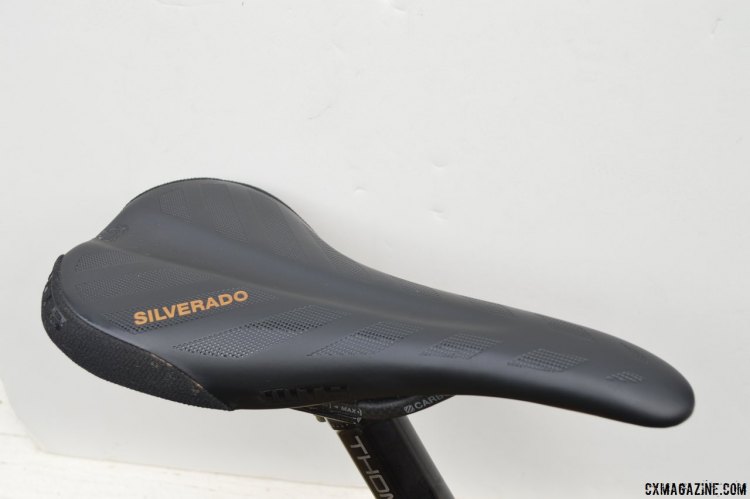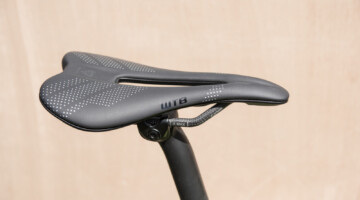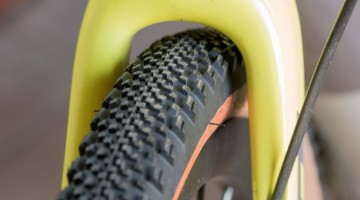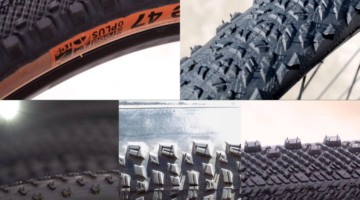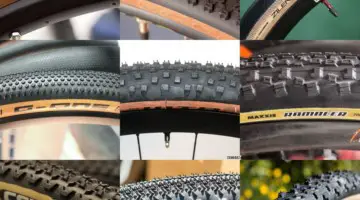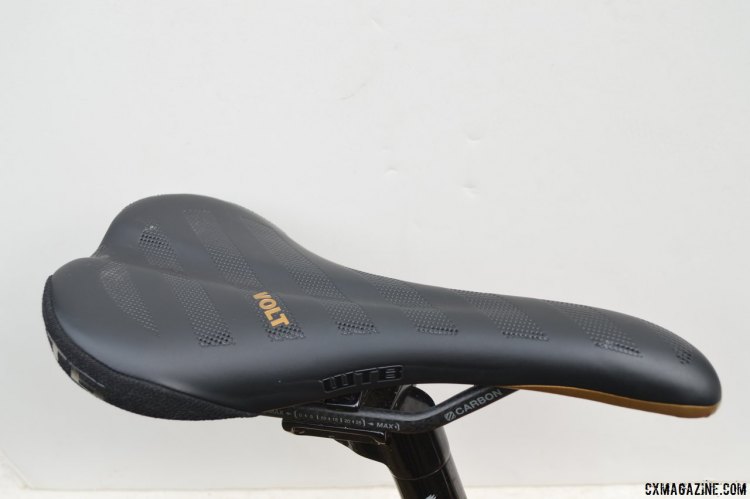
The WTB Volt comes in three separate widths, shown here in narrow: the only size that comes at the Carbon level. © Clifford Lee / Cyclocross Magazine
WTB revamped its extensive saddle line for 2015, with an update to the look, and reorganization of the models, sizes and rail material. Nine models exist covering every discipline from recreational riding to racing, and most are available in three widths and a variety of rail materials. The models are divided into Carbon, Team, Pro, Race and Comp, with the levels based on rail material and type of shell and padding material.
The Volt and Silverado models are at the top of the heap for cyclocross, with the Volt available in each of the five levels and the Silverado only in the top three levels. The Volt and Silverado have similar shapes, the Volt being shorter and with very slightly more curve than the longer and very slightly flatter Silverado.
We tested the top-end Carbon models that tip the scale a few grams heavier than advertised, but still at a paltry 156 grams for the shorter Volt and 175 grams for the Silverado. Although three widths are available for the Volt, only the narrow width is available in the Carbon model.
Will Ritchie of WTB told us that due to the race orientation of the Carbon level, most of the riders who inspired the ultralight models wanted the narrow width. The Silverado is only available in one narrow width.
Contributing to the light weight of these Carbon models is the carbon rails, carbon composite shell, and WTB’s DNA padding that is dense but light. The black on black textured graphics are very attractive and offer a perfect amount of surface friction, and the corners have durable fabric corners that resist tears should the bike go down, with or without you on it.
Saving 30-50 grams of saddle weight may not make that much of a difference, but weight weenies will appreciate the thought and if you rock your bike back and forth on a hard climb or in a sprint, the moment of inertia is lessened with the light saddle.
The Volt is the shorter of the two models we sampled, though they otherwise seem the same regarding shape, width and padding. Nominally, they are spec’d 2mm different in width, but the difference is negligible, as is the slight difference in amount of curve.
The longer, slightly flatter Silverado arguably gives you more room to move around, the shorter Volt is perhaps easier to swing your leg over. Both have a bit of rise at the back, nice to push against in a big seated effort, and both drop slightly in the nose so your shorts don’t catch when sliding back.
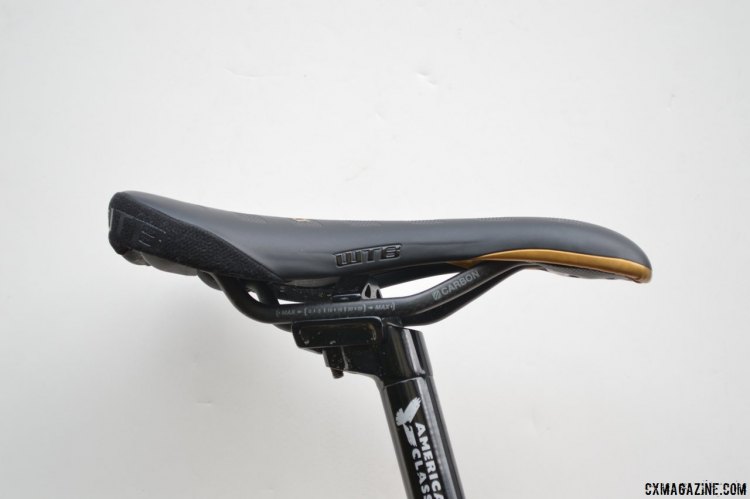
At 1.5cm less in length, the WTB Volt could be marginally easier to throw a leg over. © Clifford Lee / Cyclocross Magazine
Although I typically ride a medium width saddle, these narrow saddles, with their ample and firm padding, and the flatness across the width, actually offers the same support as some other saddles that are labelled as wider, but curve off at the corners.
I found both of the models were quite comfortable despite their labelled width. The center channel that WTB labels the “Love Channel” is deep enough, and combined with the firmness of the padding and shell combined offers true relief from central crotch pressure, and the problems that accompany it. I raced both shapes and though I used to like curvy shapes, I actually like the Silverado’s slightly flatter (it’s still not flat) shape better of the two, and I appreciate the extra 1.5cm of length.
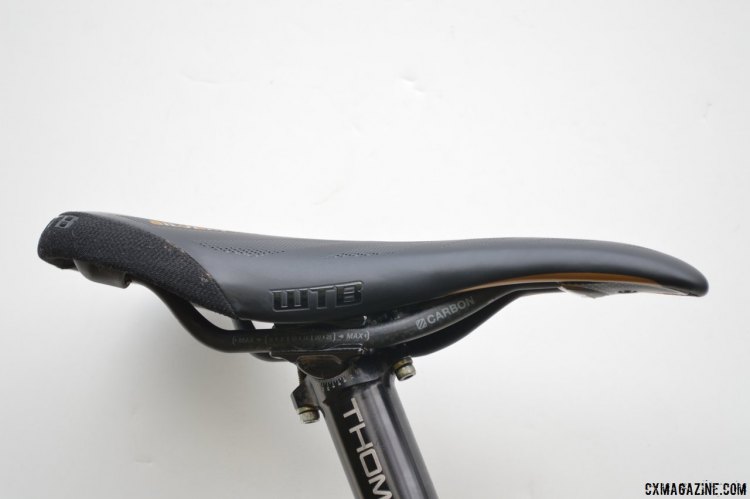
The longer, flatter WTB Silverado is about 20g heavier than the Volt. © Clifford Lee / Cyclocross Magazine
Finally, the carbon rails were mounted on well seatposts with standard, well supported clamps and have not broken, cracked, or delaminated when ridden under my 155 pounds over all types of terrain, including bouncy descents and hard remounts. As is typical, these rails are not designed for, and are therefore inappropriate for, a side mounted clamp. Though there is no specified weight limit, common sense should prevail here.
Saddles are a personal choice for riders, depending on your riding style, body type, etc. For the WTB Volt and Silverado, I would definitely recommend them if you like their shape. The Silverado is only available in the narrow width, but consider it rides slightly wider than spec might indicate. The pricey Carbon model is probably more for weight weenies than for those hard on equipment.
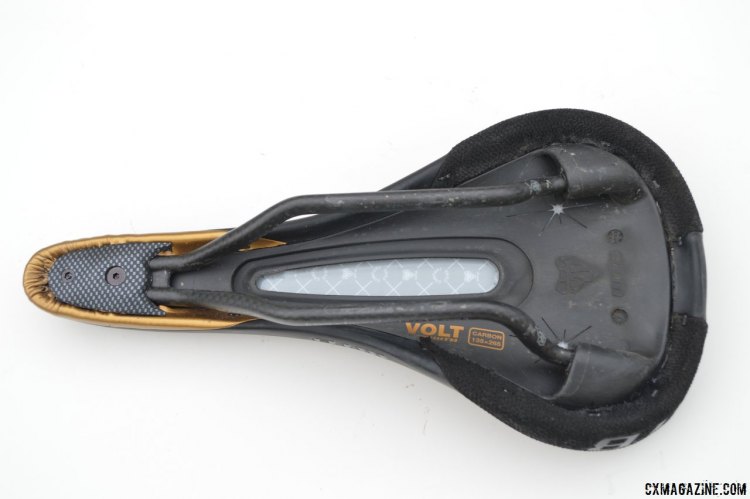
The carbon rails stood up to the abuses of our cyclocross tests. © Clifford Lee / Cyclocross Magazine
WTB Volt Carbon Specifications:
Weight: 156g
Width: 135mm
Length: 260mm
Also available in 142mm and 150mm widths in rail materials other than carbon
WTB Silverado Carbon Specifications:
Price: $249.95
Weight: 175g
Width:133mm
Length: 274mm
More info: wtb.com












